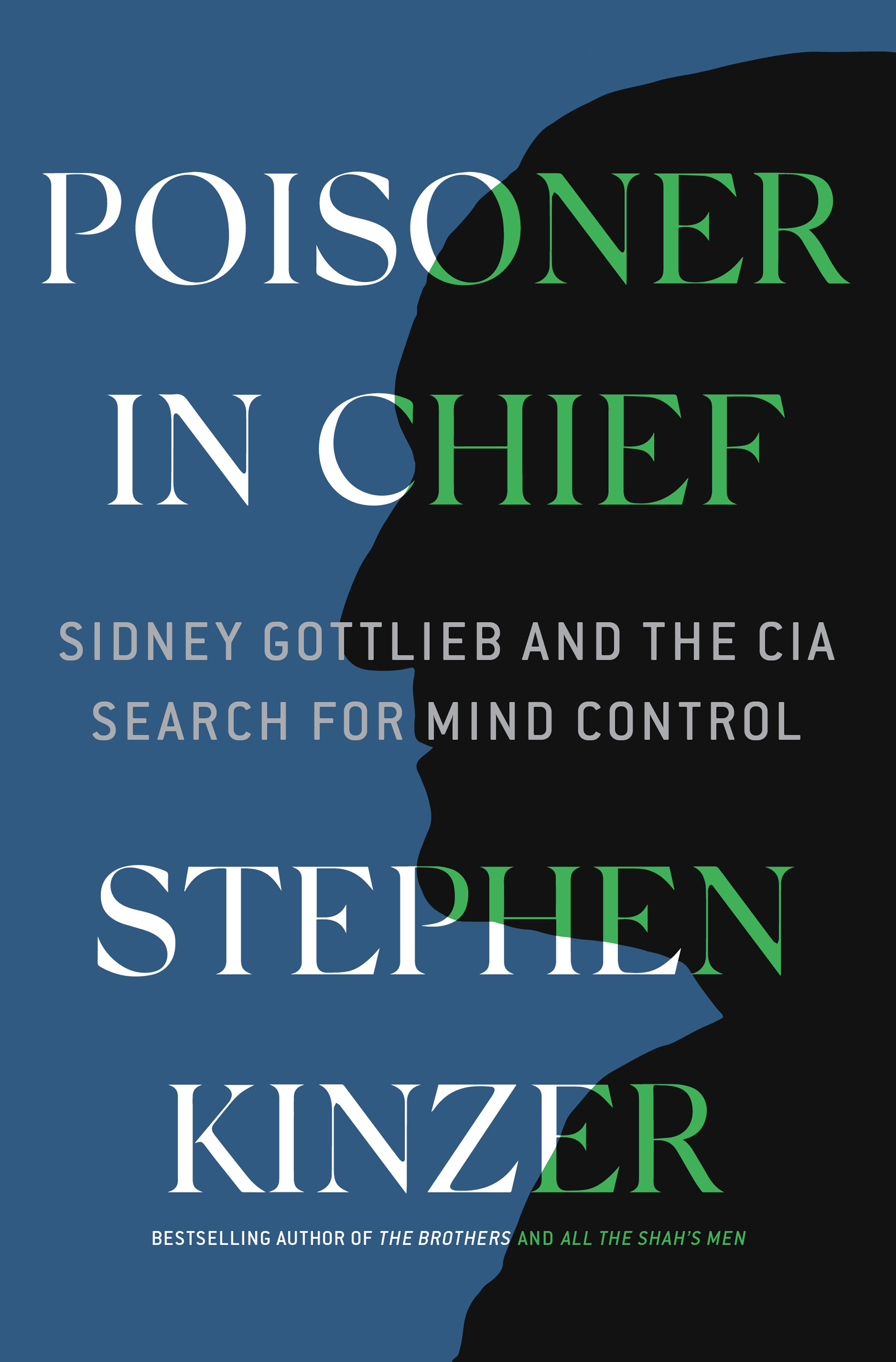Kinzer - Poisoner in Chief
Here you can read online Kinzer - Poisoner in Chief full text of the book (entire story) in english for free. Download pdf and epub, get meaning, cover and reviews about this ebook. year: 1958, publisher: Henry Holt and Co., genre: History. Description of the work, (preface) as well as reviews are available. Best literature library LitArk.com created for fans of good reading and offers a wide selection of genres:
Romance novel
Science fiction
Adventure
Detective
Science
History
Home and family
Prose
Art
Politics
Computer
Non-fiction
Religion
Business
Children
Humor
Choose a favorite category and find really read worthwhile books. Enjoy immersion in the world of imagination, feel the emotions of the characters or learn something new for yourself, make an fascinating discovery.

Poisoner in Chief: summary, description and annotation
We offer to read an annotation, description, summary or preface (depends on what the author of the book "Poisoner in Chief" wrote himself). If you haven't found the necessary information about the book — write in the comments, we will try to find it.
Poisoner in Chief — read online for free the complete book (whole text) full work
Below is the text of the book, divided by pages. System saving the place of the last page read, allows you to conveniently read the book "Poisoner in Chief" online for free, without having to search again every time where you left off. Put a bookmark, and you can go to the page where you finished reading at any time.
Font size:
Interval:
Bookmark:


The author and publisher have provided this e-book to you for your personal use only. You may not make this e-book publicly available in any way. Copyright infringement is against the law. If you believe the copy of this e-book you are reading infringes on the authors copyright, please notify the publisher at: us.macmillanusa.com/piracy.
LIGARIUS: Whats to do?
BRUTUS: A piece of work that will make sick men whole.
LIGARIUS: But are not some whole that we must make sick?
BRUTUS: That must we also.
Shakespeare, Julius Caesar
Years of wandering through distant lands, never knowing who or what lies around the next bend! It is a prospect to stir any adventurous soul. During the second half of the twentieth century, few American souls were as restless as that of Sidney Gottlieb. He spent his career deep inside Washingtons secret world. No one knew what he did, but he seemed to have earned a fulfilling retirement.
A more ordinary man might have been happy to spend his later years relaxing, reminiscing, or playing with grandchildren. Gottlieb, however, was a psychic voyager, far from anyones stereotype of the career civil servant. His home was an eco-lodge in the woods with outdoor toilets and a vegetable garden. He meditated, wrote poetry, and raised goats.
Gottlieb was just fifty-four years old when he retired. His career ended well, with a ceremony at which he was awarded a medal for distinguished service. Soon afterward, he and his wife sold their home and almost everything else they owned. In the autumn of 1973 they set off to seek humanitarian adventure and spiritual fulfillment. Their plan was marvelously vague: board a freighter in San Francisco and go wherever it was going. They had little interest in sightseeing or conventional tourism. The Gottliebs wanted to spend their older years serving the worlds neediest people.
Australia was their first stop. After a while there, they booked passage onward. A year of wandering led them to India. They learned of a hospital where victims of leprosy were treated and made their way there to volunteer. Living among the patients, they embraced the work of caring for societys castoffs. Then, on a summer day in 1975, a message from Washington shattered Gottliebs world. Someone had discovered who he was. The United States Senate wanted to question him.
In two decades at the Central Intelligence Agency, Gottlieb had directed historys most systematic search for techniques of mind control. He was also the CIAs chief poison maker. His work had been shrouded in secrecy so complete as to render him invisible. Now he was being summoned home. He would be expected to account for his deeds, possibly even to appear in public. Never could he have imagined such a twist of fortune.
Soon after Gottlieb arrived in Washington, friends told him he needed a lawyer. One suggested Terry Lenzner, who had worked for the Senate Watergate Committee. Gottlieb called him. After they met, Lenzner wrote: I was in contact with Dr. Death himself.
For years Gottlieb had overseen medical experiments and special interrogation projects in which hundreds of people were tormented and many minds were permanently shattered. No one had ever plunged into this kind of work with more ambition or enthusiasm. Gottlieb justified it all in the name of science and patriotismuntil the end, when his conscience finally broke through.
In the years after Gottlieb reluctantly returned to Washington, bits of information about his work began to emerge. He testified at two rounds of Senate hearings. Later he was forced to defend himself against lawsuits filed by people who had come to suspect that they were among his victims. He revealed almost nothing beyond the fact that before leaving the CIA he had destroyed all records of what he did. He was never convicted of a crime. His funeral in 1999 was private.
Enough had become known about Gottlieb to tantalize obituary writers. The New York Times published its obituary under the circumspect headline SIDNEY GOTTLIEB, 80, DIES; TOOK LSD TO C.I.A. It called Gottlieb a kind of genius, striving to explore the frontiers of the human mind for his country while searching for religious and spiritual meaning in his life He served two decades as the senior scientist presiding over some of the CIAs darkest secrets. The Los Angeles Times obituary began: James Bond had Q, the wizard who supplied 007 with dazzling gadgets to deploy against enemy agents. The CIA had Sidney Gottlieb.
Others were sharper. The iconoclastic website Counterpunch headlined its obituary PUSHER, ASSASSIN & PIMP: US OFFICIAL POISONER DIES. Another writer concluded that Gottlieb takes his place among the Jekyll and Hydes of the American 20th century. Whether homesteading in Virginias verdant hills or safeguarding national security with another experimental torture session, Gottlieb stayed loyal to the positivist credo that rational exploration and productive discipline will lead to good.
In Britain, where obituaries are famously unrestrained, the tone was biting. The Guardian called Gottlieb everything you have dreamed of in a mad scientist in a pulp novel about the CIAexcept that he was real. The Independent said he was living vindication for conspiracy theorists that there is nothing, however evil, pointless or even lunatic, that unaccountable intelligence agencies will not get up to in the pursuit of their secret wars. The Times was even more vivid:
When Churchill spoke of a world made darker by the dark lights of perverted science, he was referring to the revolting experiments conducted on human beings by Nazi doctors in the concentration camps. But his remarks might with equal justice have been applied to the activities of the CIAs Sidney Gottlieb Indeed, what Gottlieb and his CIA henchmen did was only in degree different from the activities which had sent a number of Nazi scientists to the gallows at Nuremberg in 1946 Drugs were not Gottliebs only weapon against the CIAs enemies. He was also involved in assassination plots which at this distance read like something out of a Jacobean revenge play.
After the ripple of notoriety that followed his death, Gottlieb faded back into obscurity. A few historical studies mention his name. One reports that he was known to some as the dark sorcerer for his conjuring in the most sinister recesses of the CIA With his club foot, he was perhaps too easy to caricature as a cross between a Bond villain and Dr. Strangelove, a scientist who always wanted to push further without worrying about the morality of where it all led. In a book called The Worlds Worst: A Guide to the Most Disgusting, Hideous, Inept and Dangerous People, Places, and Things on Earth, Gottlieb is named the maddest mad scientist. The author gives him grudging credit for being smart enough to work for an organization that would not only allow him to poison and murder people with such aplomb, but would also protect him from the consequences awaiting any other sociopath.
Gottlieb also turns up briefly in two modern American novels. Barbara Kingsolvers portrait of life in the Congo, The Poisonwood Bible, refers to his role in the CIA plot to assassinate Prime Minister Patrice Lumumba. She writes that a scientist named Dr. Gottlieb was hired to make a poison that would produce such a dreadful disease (the good doctor later testified at the hearings), if it didnt kill Lumumba outright it would leave him so disfigured that he couldnt possibly be a leader of men. A character in Norman Mailers fevered history of American covert action,
Font size:
Interval:
Bookmark:
Similar books «Poisoner in Chief»
Look at similar books to Poisoner in Chief. We have selected literature similar in name and meaning in the hope of providing readers with more options to find new, interesting, not yet read works.
Discussion, reviews of the book Poisoner in Chief and just readers' own opinions. Leave your comments, write what you think about the work, its meaning or the main characters. Specify what exactly you liked and what you didn't like, and why you think so.






